After being in a marina in Castelsardo our next stop, after about 5 hours of mainly motor-sailing was Porto Pozzo, where we picked up a mooring ball (€25/night). PP is on a long rocky inlet, with the small town at the southern end. We had a very pleasant meal in an up-market restaurant overlooking the bay the first night of our two-day stay there. Our next port of call was Olbia. The passage there involved transitioning the Magdelena islands off the NE coat of Sardinia, very close to Corsica. This area appears to be a boat charterers dream: great scenery, crystal clear water, blue skies and sunshine. The rock formations are quite different from the Balearics in that most of the rock we have seen here is granite. One has to pay close attention to the charts in order to avoid some of the rocky outcrops!
From there we proceeded SE past Costa Smeralda and the mega-yacht center at Porto Cervo. The latter is a place where the rich and famous exhibit their wears and opulence. We had tried to hire a car to visit for an afternoon, but that is another story. After passing Ragamuffin, an Oyster 56 which we docked alongside in Palma, on a downwind leg we reached Olbia and found a nice spot on the town dock wall. This is one of the few places in the Western Med where there is a minimal charge for docking, and often it is free if the coast guard don’t come around to collect (as they didn’t for our first few days here).
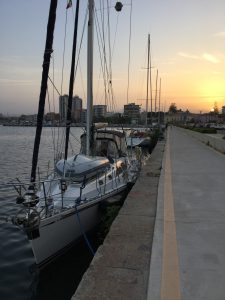
Olbia, like many of the towns here, has a rich history. The Nuraghese who built stone towers and burial tombs as early as 1,500 BC, over 7,000 of which still exist, Phoenicians, Greeks, Romans, and Christian, have all lived in the area. We visited the Roman ruins in Porto Torres, a settlement supposedly established by Julius Caesar or his son Augustus (mosaic at the top of this blog). Olbia was a much larger and more important town, a main port and source of granite. The harbor became untenable in 453 AD when the vandals sacked the town and burnt numerous Roman ships, blocking the port. It took centuries to reestablish itself. The modern town has grown up over the old so, for example the church of San Simplicio probably began as a Phoenician cult place over 2,700 years ago and later became a Roman place of worship surrounded by a necropolis.
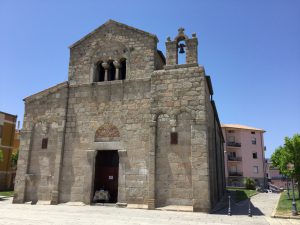
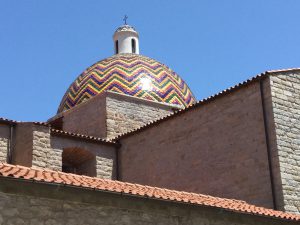
Olbia is quite a tourist town with many restaurants occupying its narrow streets. It is also a major port with the Moby ferry/cruise line having a base here. Some of it ships are painted with Batman or Disney characters.
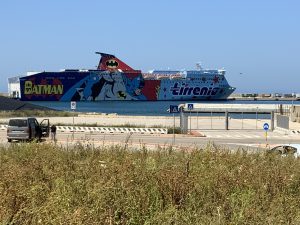
There are some interesting differences between Spain and Italy. Recycling appears to a low priority here, with amazingly few recycling bins, and those that are available need a credit-type card to open, useless for visitors. The buildings in the Balearics were better maintained, in general, than those here. However, in both cases the people have been remarkably friendly and open.
Tomorrow should see us starting a two day passage to Volcano, off the N coat of Sicily. A volcano to climb, could be interesting!
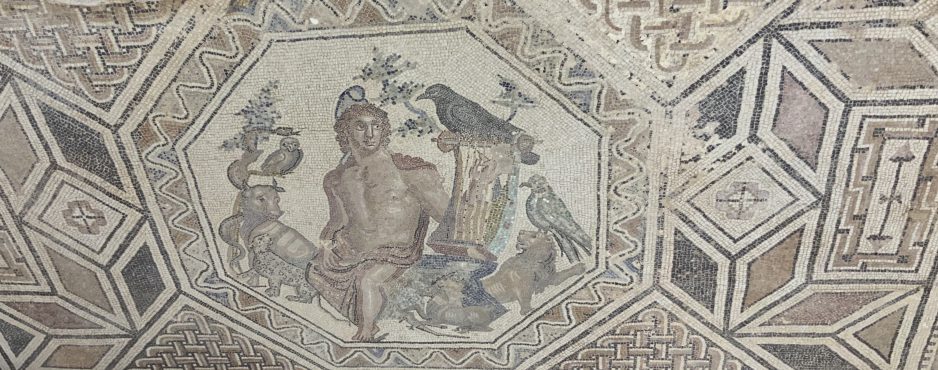
2 Comments
Ruth and Nick Pearman
So interesting to begin to unpick the history of the Western Mediterranean and the individual islands in it. If you ever stop cruising, you might be tempted to study it in more depth, that is if you settled somewhere with long winter evenings, which I guess is unlikely! Safe passage to Sicily. Hope you are feeling fit as you tackle that volcano!
Cheryll
Fabulous to learn about the differences with Spain and the rich history of Italy. You are quite the historian now Hope. Corsica sounds nice too. Have always wanted to go there, maybe by boat one day. Currently exploring France some more in Camper. Hoping to have another shot at connecting with Sonia later in the trip.